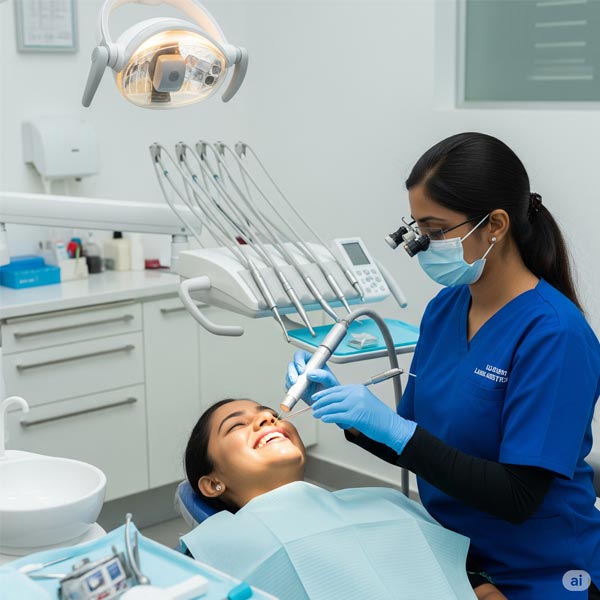LASER ASSISTED DENTISTRY
The laser allows precise tissue sections, thus minimizing damage to adjacent structures and promoting faster recovery with less inflammation and edema [2]. Also, the laser reduces the need for local anesthesia in specific procedures, offering increased comfort to patients through the absence of the vibrations and noise specific to traditional dental burs [3]. In minimally invasive soft and hard tissue surgery, this technology helps reduce intraoperative bleeding and postoperative discomfort, which improves the overall patient experience [4]
Lasers in Soft Tissue Surgery
Lasers in dental medicine can interact with soft tissues due to their specific wavelengths absorbed by water and hemoglobin. These properties make lasers ideal for cutting, vaporizing, and coagulating soft tissues, providing excellent bleeding control and minimizing postoperative discomfort.
Lasers in soft tissue surgery can be used in procedures such as gingivectomies, frenectomies, removal of mucosal lesions, and gingival tissue remodelling. One of the important aspects of soft-tissue laser surgery is the fact that faster healing occurs.
Lasers in Hard Tissue Surgery in Dentistry
In hard tissue surgery involving bones and teeth, lasers are used for a wide range of procedures, such as dental caries, gingivectomies, bone lesions, and periodontal surgery
Although lasers are effective for various dental procedures, they are not universal and cannot completely replace all traditional instruments. For example, in restorative dental treatments, the laser is not always ideal for removing deep cavities or hard restorative materials such as amalgam or ceramic crowns. In such cases, conventional cutters remain more efficient and faster. Also, the laser has limitations in penetration depth, making it difficult to treat very deep caries or tooth structures that require removing a large amount of tooth tissue
Conclusions
The laser is revolutionizing dentistry with its exceptional precision, minimally invasive interventions, and ability to stimulate rapid healing. The technology reduces pain and speeds recovery, providing superior results in deep disinfection and personalized treatments. With the integration of artificial intelligence and increasing accessibility, the laser is the future of dental treatments, redefining comfort and efficiency for patients and doctors.




